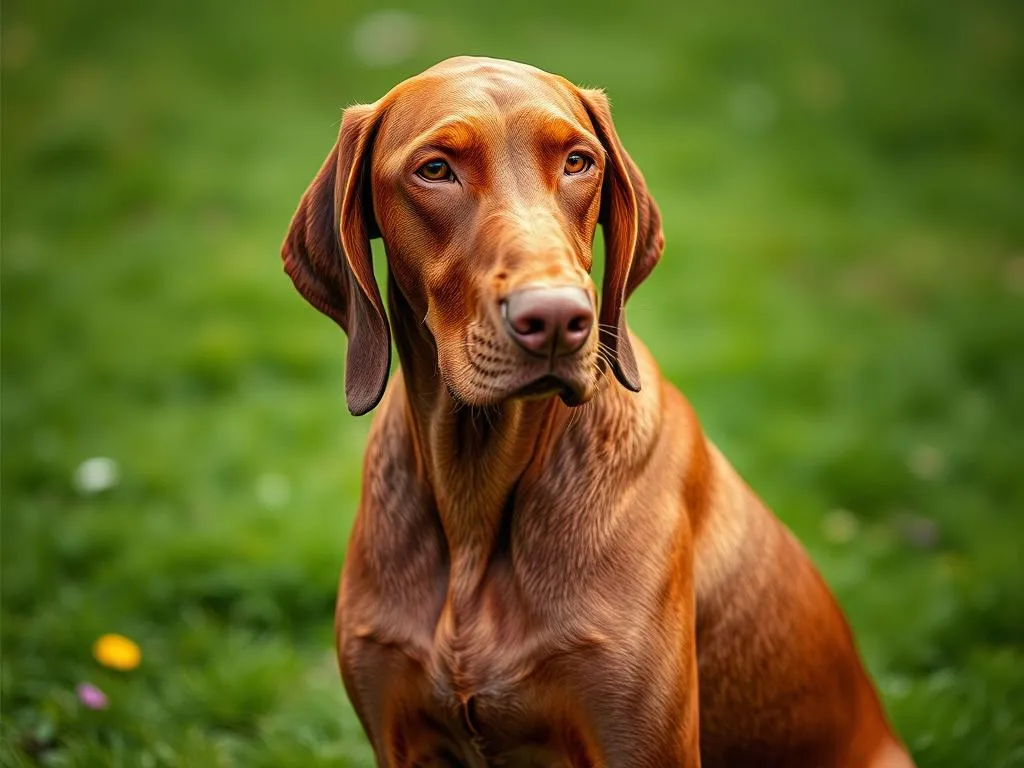
Dog ownership has surged in popularity over recent years, with millions of households welcoming furry companions into their lives. However, along with the joy of having a dog, many potential pet owners face the challenge of allergies. The term “hypoallergenic” often comes up in discussions about dog breeds, particularly for those who suffer from dog-related allergies. This article delves into whether Vizslas are hypoallergenic, examining their characteristics, shedding patterns, and the experience of owners who might be sensitive to allergens.
Understanding Hypoallergenic Dogs
Definition of Hypoallergenic
In the context of dog breeds, hypoallergenic refers to the idea that certain breeds are less likely to trigger allergic reactions in sensitive individuals. This notion is often misleading, as no dog is completely free of allergens. Instead, hypoallergenic dogs typically produce fewer allergens or shed less dander, making them more suitable for allergy sufferers.
Common Allergens Associated with Dogs
The main allergens associated with dogs include:
- Dander: Tiny flakes of skin that dogs shed.
- Saliva: Proteins found in dog saliva can be potent allergens.
- Urine: Dog urine can also contain allergens that may affect sensitive individuals.
Different breeds have varying levels of these allergens, and understanding this can help potential owners make informed decisions.
Overview of the Vizsla Breed
History and Origin
The Vizsla is a sporting breed that originated in Hungary, initially bred for hunting and companionship. With their keen sense of smell and high energy levels, Vizslas were traditionally used for tracking game. Today, they are cherished not only for their hunting skills but also for their affectionate nature and loyalty to families.
Physical Characteristics
Vizslas typically stand between 21 to 24 inches tall and weigh between 45 to 65 pounds. They have a short, sleek coat that is easy to maintain, which may lead some to believe they are more hypoallergenic than longer-haired breeds. However, their short hair does not eliminate shedding, and some owners report moderate dander production.
Temperament and Behavior
Vizslas are known for their friendly and energetic temperament. They are highly social dogs that thrive on human interaction. However, their enthusiasm may lead to behaviors such as drooling, which can be a concern for allergy sufferers. Understanding these traits is essential for potential owners, especially those sensitive to allergens.
Are Vizslas Hypoallergenic?
Shedding and Dander Production
When it comes to shedding, Vizslas are considered moderate shedders. They do not have an undercoat, which means they shed less than some other breeds, but they still produce dander. Regular grooming can help minimize the amount of dander in the home, but it’s important to note that allergy sufferers may still experience reactions.
In comparison to other breeds often labeled as hypoallergenic, such as Poodles or Bichon Frises, Vizslas may not fare as well. These hypoallergenic breeds are known for their low-shedding coats, which can significantly reduce allergen levels in the environment.
Allergy Sufferer Experiences
Many Vizsla owners who suffer from allergies report mixed experiences. Some individuals find that they can tolerate having a Vizsla in their home with proper precautions. Others, however, experience allergic reactions despite the breed’s designation. Consulting with a veterinarian or allergist can provide tailored advice for those considering adding a Vizsla to their family.
Factors Influencing Allergic Reactions
Individual differences play a significant role in allergic reactions. Factors such as genetics, the severity of the allergy, and environmental conditions can all influence how a person reacts to dog allergens. For instance, someone may be allergic to specific proteins in a Vizsla’s saliva or dander, while others may not have the same sensitivity. Environmental factors, like humidity and cleanliness of the home, can also affect allergy severity.
Managing Allergies in Dog Owners
Tips for Reducing Allergens at Home
For those who already own a Vizsla or are considering one, there are several effective strategies to minimize allergens in the home:
- Regular Cleaning: Vacuum frequently with a HEPA filter to capture dander.
- Wash Bedding: Clean dog bedding and blankets regularly to reduce allergen buildup.
- Keep Air Clean: Use air purifiers equipped with HEPA filters to eliminate airborne allergens.
- Designated Dog Areas: Limit the areas of the house where the dog is allowed, particularly bedrooms.
Grooming Practices
Regular grooming is crucial for managing allergens in Vizslas. Here are some effective grooming practices:
- Frequent Brushing: Brush your Vizsla at least once a week to reduce loose hair and dander.
- Bathing: Bathe your Vizsla every 4 to 6 weeks with a gentle, hypoallergenic shampoo to help control dander.
- Professional Grooming: Consider professional grooming services for thorough cleaning and maintenance.
Lifestyle Adjustments
Adopting a Vizsla while managing allergies may require some lifestyle changes. Here are a few suggestions:
- Medication: Consult with a healthcare provider about antihistamines or allergy shots.
- Regular Vet Visits: Keep up with vet check-ups to ensure your dog’s health, which can impact allergen levels.
Alternative Dog Breeds for Allergy Sufferers
Overview of Hypoallergenic Breeds
For those who are highly sensitive to allergens, opting for a hypoallergenic breed may be the best choice. Some popular hypoallergenic breeds include:
- Poodle: Available in standard, miniature, and toy sizes, Poodles have a curly coat that traps dander.
- Bichon Frise: This breed has a soft, curly coat that does not shed much, making them ideal for allergy sufferers.
- Portuguese Water Dog: Known for their wavy coat, they are also low-shedding and friendly.
Considerations When Choosing a Dog
When selecting a dog, allergy sufferers should consider the following:
- Interaction Time: Spend time with a breed before committing to ensure you can tolerate them.
- Grooming Needs: Assess the grooming requirements of different breeds, as this can affect allergen levels.
- Living Environment: Consider how your living space can accommodate a dog and the necessary allergy management strategies.
Conclusion
In summary, while Vizslas are not considered hypoallergenic, their moderate shedding and dander production may be manageable for some allergy sufferers. Individual reactions vary widely, and prospective owners should carefully assess their own allergies before bringing a Vizsla home. With the right management strategies and lifestyle adjustments, many individuals can enjoy the companionship of this affectionate breed. For those particularly sensitive to allergens, exploring hypoallergenic breeds may be a more suitable option.
Frequently Asked Questions (FAQs)
Can I be allergic to a Vizsla even if they are considered hypoallergenic?
Absolutely. While Vizslas may produce fewer allergens than some breeds, individual sensitivities vary greatly, and some people can still experience allergic reactions.
What are the signs of a dog allergy?
Common signs of a dog allergy include sneezing, runny or stuffy nose, itchy or watery eyes, skin rashes, and in severe cases, difficulty breathing.
How do I find out if I’m allergic to a dog?
Consulting with an allergist can provide a definitive diagnosis. They may perform skin tests or blood tests to identify specific allergens.
Are there any specific care tips for Vizslas that help with allergies?
Regular grooming, cleaning, and the use of air purifiers can significantly help reduce allergens in your home if you have a Vizsla.
References
- Comprehensive studies on hypoallergenic dogs and their characteristics.
- Expert opinions from veterinarians and allergists on managing dog allergies.









